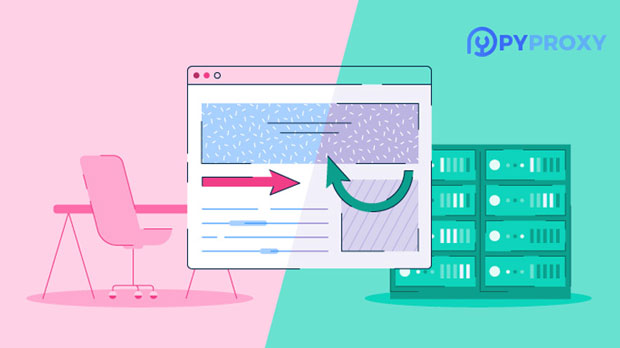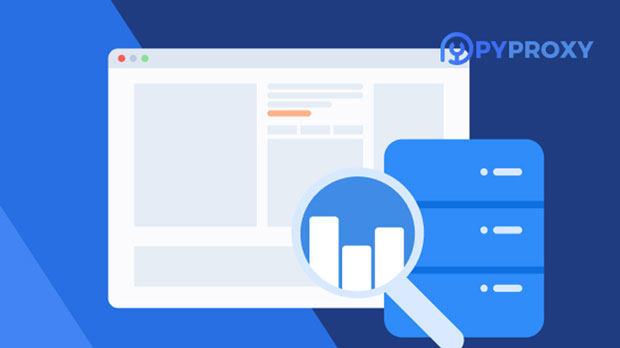How to test the connection speed of proxy IP?
In today’s digital world, proxies are used to ensure anonymity, bypass geographical restrictions, and optimize web scraping, among other functions. However, while proxies offer many benefits, their performance—especially speed—can vary significantly depending on the provider, type, and the network they are connected to. Testing the connection speed of proxy ips is crucial to assess their reliability and efficiency, especially for tasks requiring high-speed access, such as streaming, web scraping, or gaming. In this article, we will delve into the importance of testing proxy connection speeds, how to conduct these tests, and factors influencing speed. By understanding how to evaluate proxy performance, you can ensure that the proxies you choose meet your specific needs. Why is Testing Proxy Speed Important?Testing the speed of proxy ips is important for a number of reasons. Whether you are using proxies for personal security, business operations, or large-scale automation tasks, slow proxies can be a hindrance. High-speed proxies ensure smooth web browsing, faster data scraping, and lower latency, improving the overall experience. On the other hand, slow proxies can lead to timeouts, slower page loads, and even disruptions in automated processes. By testing proxy speeds, you can identify the most efficient proxies that align with your needs.Understanding the Factors that Affect Proxy SpeedBefore testing proxy speeds, it's important to understand the factors that can influence the performance of proxy IPs:1. Geographical Location: The distance between the proxy server and your device can greatly affect connection speeds. Proxies that are located far away will experience higher latency and slower response times. Ideally, the closer the proxy server is to your physical location, the faster the connection.2. Proxy Type: Different types of proxies—such as residential, data center, and mobile proxies—vary in speed. Data center proxies are typically faster because they are hosted on powerful servers. residential proxies, while more reliable and harder to detect, may have slower speeds due to bandwidth restrictions.3. Server Load: If the proxy server is being used by many people at once, this can cause congestion and result in slower speeds. Testing a proxy at different times of day can help identify fluctuations in speed.4. Connection Protocol: The protocol used by the proxy, such as HTTP, HTTPS, or SOCKS, can impact speed. For example, SOCKS proxies tend to have better speed and versatility compared to HTTP/HTTPS proxies, but the trade-off may be additional setup requirements.5. Network Infrastructure: The quality of the network infrastructure of the proxy provider also plays a role. If the provider has poor network equipment or routing paths, it will negatively impact proxy speed.Methods for Testing Proxy SpeedThere are several effective ways to test proxy IP speed. Below are some of the most common methods used by individuals and businesses to evaluate proxy performance:1. Manual Speed TestThe most straightforward method to test proxy speed is by using speed test websites. Websites like these measure the ping, download speed, and upload speed of your internet connection. When testing with a proxy, these websites will reflect the connection through the proxy server, allowing you to assess the proxy’s impact on speed.To conduct a manual speed test:1. Connect to the internet via the proxy server.2. Visit a speed testing website.3. Record the results, which typically include ping, download, and upload speeds.4. Compare these results to your normal connection speed (without the proxy).The download and upload speeds should be close to what you get without using the proxy, and the ping should be as low as possible. A high ping may indicate a distant or overloaded server.2. Automated Proxy Speed Testing ToolsFor those who need to test large batches of proxies, or those who want to conduct repeated tests, automated proxy speed testing tools can be invaluable. These tools can test the speed of proxies in bulk, monitor real-time performance, and even offer features like proxy rotation. Automated tools allow you to test proxies based on specific parameters, such as:- Geographic location- Type of proxy- Specific testing times- Protocol usedThese tools typically provide detailed reports on each proxy’s speed, making it easier to compare different proxies and choose the fastest ones.3. Latency Test Using TracerouteWhile speed tests focus on download/upload speeds, latency plays an equally important role. Latency refers to the time it takes for a data packet to travel from your device to the proxy server and back. High latency can cause delays in tasks such as gaming or real-time communications.A traceroute is a simple method to check the route your data packets take to reach the proxy server. It also shows the time taken for each step in the route. By performing a traceroute test, you can identify if there are any bottlenecks or delays in the connection that could be affecting speed.To perform a traceroute:1. Open a command prompt or terminal window.2. Type the command `tracert ` for Windows or `traceroute ` for Mac/Linux.3. Review the results to determine latency and identify any slow points.4. Comparing Different Proxy ServersSometimes, the best way to evaluate the speed of proxies is through direct comparison. This involves testing several proxies from different providers or networks to determine which one performs the best in your specific environment. By conducting side-by-side tests using the same connection, you can clearly see which proxy server offers the lowest latency and highest throughput. It’s also helpful to test proxies under various load conditions and at different times of the day.How to Interpret Speed Test ResultsOnce you’ve gathered data from your speed tests, you need to interpret the results to determine the best-performing proxy for your needs.1. Ping: This is the response time from the proxy server. Lower ping values are better. If your ping is over 100ms, you may notice delays when browsing or performing time-sensitive tasks. 2. Download Speed: This represents the rate at which data is transferred from the server to your device. A higher download speed is critical for activities such as streaming and downloading large files.3. Upload Speed: This shows how fast data can be sent from your device to the proxy server. For tasks like web scraping, a higher upload speed may be necessary.To ensure reliability, aim for proxies with a stable, consistent speed rather than those with fluctuating speeds.ConclusionTesting the connection speed of proxy IPs is essential for ensuring optimal performance in online tasks. Factors like geographical location, proxy type, server load, and network infrastructure all play key roles in proxy speed. By using a combination of manual tests, automated tools, and latency checks, you can effectively measure and compare proxy performance to make informed decisions. By regularly testing proxies, you can ensure a smoother, more efficient internet experience, whether you're using proxies for personal security, business purposes, or large-scale automation projects.
2025-02-03

























































